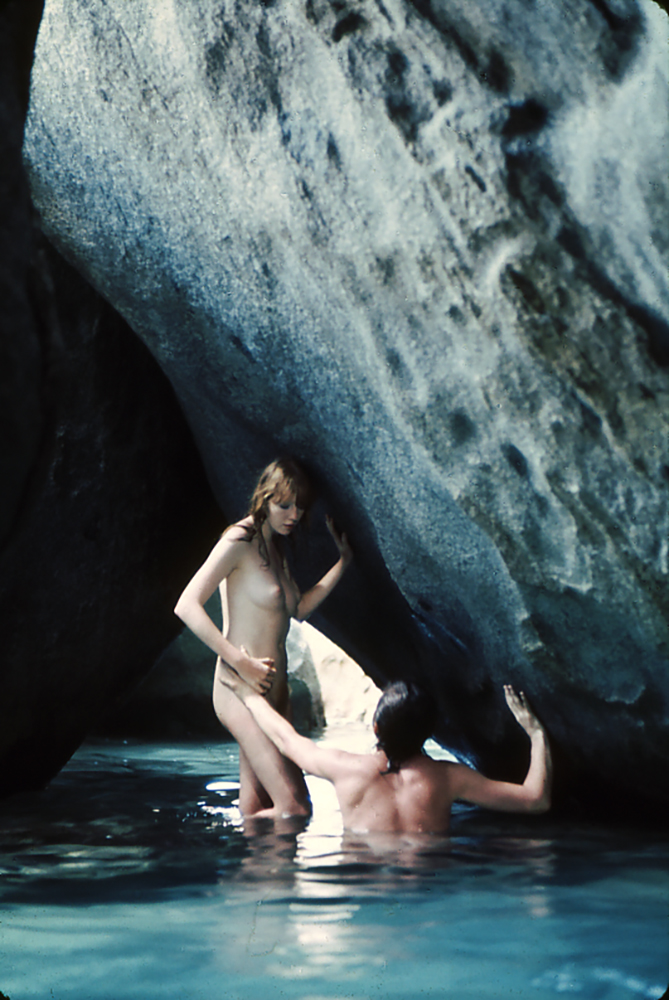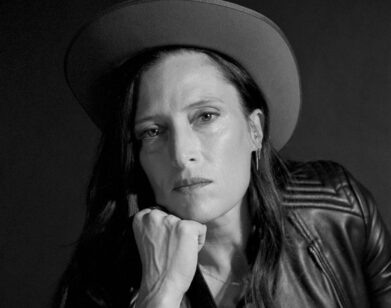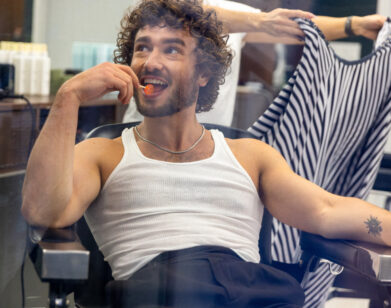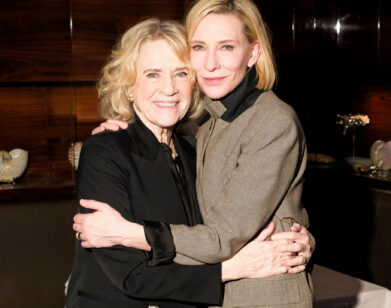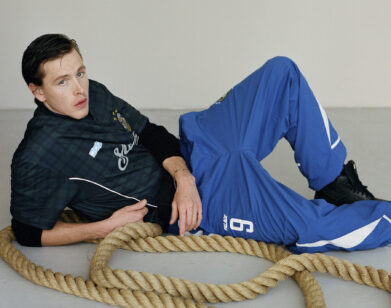Wakefield Poole
What do you do after you change the world? That was what I wanted to ask the radical gay filmmaker Wakefield Poole. Yet his very existence answers the question: you live on, and sometimes the revolution you provoked changes the world so completely it seems as if it has always been that way. Poole, now 81, lives in Jacksonville, Florida, close to his family. But in the early 1970s, he was an experimental New York director who brought a level of visibility to the sexual fantasies of gay men never before seen on American screens.
Poole’s groundbreaking debut, Boys in the Sand, was his attempt to capture, and deliver to a larger audience, the freedom he had experienced on Fire Island. He cast his lover and handsome men from the area in the film, more or less on a shoestring budget. In the 55th Street Playhouse, a mainstream movie theater in midtown Manhattan, he found a willing venue for his sun-saturated debut, which centered on the carnal adventures of his leading man, a blond dynamo named Casey Donovan.
Boys in the Sand is composed of three vignettes: Donovan emerging from the sea like a male Venus, dressed in just a cock ring, to satisfy the longing of an attractive young man on the beach; Donovan summoning another lover via a tablet he tosses into a swimming pool; and Donovan seducing a telephone line repairman with whom he locks eyes from his upstairs window. The 72-minute film captured what we now know as the Fire Island aesthetic, imprinting it in all of its hazy, hedonistic glory on the American imagination. By combining an art-house style with a pornographic imperative, Poole blurred the ordinary and the surreal, and positioned himself alongside fellow cinematic provocateurs such as Kenneth Anger and Andy Warhol. (Poole, as it turned out, was so inspired by Warhol that he even made a short film about his work.)
Upon its release in December 1971, Boys in the Sand managed the seemingly impossible task of bringing credibility to a genre not especially known for its artistry; it was, in fact, the first hardcore gay film to be reviewed in Variety. It also proved that movies with gay sex could be good for business: the audiences who lined up to see it at the 55th Street Playhouse—gay and straight—made it an instant sensation and a box office hit.
Not that any of this happened by chance. Poole, an autodidact as a filmmaker, had come to the medium after years of working as a dancer, choreographer, and stage director, and he applied that theatrical knowledge to the creation of each recorded moment. He went on to make more films—ten features in total, including 1972’s Bijou, about a man who finds a ticket to a private sex club; 1974’s Wakefield Poole’s Bible, an X-rated reimagining of scriptural dalliances; and 1977’s Take One, about a group of men living out their fantasies in front of the camera, documentary-style—but none achieved the legendary status of the first.
When the AIDS epidemic of the 1980s cut short his cinematic moment, Poole, having changed the world, became a chef. And while he no longer makes films, his legacy lives on in the work and spirit of those who do.
ALEXANDER CHEE: I want to start with a theory I have that your work is the source-code to so much of what we think of as the contemporary gay aesthetic. I don’t know if you get as much credit as you should.
WAKEFIELD POOLE: Well, that’s true. [laughs] But it’s getting better. I’m getting a resurgence of interest and a lot more recognition. The gay community has been cautious about giving me any credit for making life better for the people around at that time, which is strange because when Boys in the Sand first came out, I had so many people come to me and say, “I came out [of the closet] after seeing that, and I want to thank you.” I don’t mean just a few; I’m talking about hundreds. And that’s really the reason I made the movie, to see if we could look at ourselves doing things that were frowned upon and feel good about them. I had a lot of filmmakers follow my lead, such as Jack Deveau and J. Brian. All of a sudden, there was a whole group of young filmmakers who found an outlet to experiment. We weren’t just making pornography. I don’t want to be high-art about it, but there was a secondary thing there, and that was to learn how to make films.
CHEE: Was Boys in the Sand your first film?
POOLE: Yes, and that’s why there’s a 600 percent difference between Boys in the Sand and the next one, Bijou. When you make mistakes, you learn not to do them again.
CHEE: One of the things that most impressed me was your insistence that the erotic was more important to you than the money shot.
POOLE: That’s right. Those films were about real people doing real things.
CHEE: With real emotion, real lust, and also this incredible tenderness even when the action onscreen wasn’t necessarily tender.
POOLE: Vulnerability was really what it was. I didn’t create a scene by saying, “You fuck him. Now you blow him for a while.” I got two people who were attracted to each other and let them go. I didn’t direct anything. I set up a safe place for them to play, and although I had a general sense of what I wanted to do in mind, orgasms were really not important to me. What was important to me was two people relating to one another and experiencing all the things that go with having sex. That includes the insecurities. “Oh, my God, am I doing this? Is this what he wants?”—all the things that go through our heads when we’re having sex with people for the first time. When we have lovers and we get used to it, we fall into a certain pattern where we’re a little more secure and creative. That’s really what I think made my films successful. I found people who wanted each other, who were hot for each other.
CHEE: One thing I love about Bijou in particular is the way that you were able to communicate a vision of the orgy as a sacred ritual. There’s a quality of worship and of the divine that comes through. It’s this amazing mix of the high and the low and the lusty and the earthy—
POOLE: Everything. [laughs]
CHEE: You’re on a voyage with the main character into this unexpected space and all the things that he’s going to find there. It’s a remarkable journey of selfdiscovery even though he barely says a word.
POOLE: Oh, yes. He was very courageous. It takes a lot of balls to go to a place you know nothing about. I got that idea because I was that way the first time I went to the baths—courageous and open to it, but frightened. I thought, “What am I going to do? How is it going to happen?” But nature has a way of taking its course. And that’s what I did with the film. I had him just stay open and let what happened happen and not give any judgment or put any value on anything. He was just there to experience. And that’s why we’re here in life—to experience. We just have to keep ourselves open.
CHEE: The thing about pioneers is that once you change the culture, it’s hard for people to appreciate what the world was like before you came along, and how provocative your art was when it first came out. I think your influence expands well past film. There’s even just that moment in the director’s commentary for Boys in the Sand where you’re talking about how the cock ring on Casey Donovan was, at the time, not at all common. Now cock rings are everywhere.
POOLE: I had a friend who owned the Pleasure Chest in New York. I think it’s still there but it turned more heterosexual. He said, “Thank you for putting those things in your film because I now have so many more people coming into the store wanting to buy cock rings.” So, yeah, I sort of started a trend.
CHEE: One thing that hasn’t really changed is Fire Island. The aesthetic remains because the dream that you were able to communicate is still alive in the minds of people who go there.
POOLE: I felt a freedom there that I had never felt before except when I went to Woodstock. That said, my soul has always been in New York. My dance teacher took me for the first time when I was 13— she paid for my hotel and gave me lessons and I would go out in the evening. She would send me to my room, and I would slip out and walk the streets.
CHEE: I’m interested in your dance background as it relates to your films. They have a modern dance feel in the way people move around and have sex.
POOLE: Well, I have a secret that I’ll pass on to you. I call it my “ballet without steps.” [laughs] Almost every Hollywood film is shot at 24 frames per second. Before sound, they used 18; that’s why the movement is so jerky. When sound came in, 24 frames became the meter. What I did was increase it to 26 or 28, and it would just smooth out any stumbles or any quick movements. All my films were shot that way. Take One isn’t because it was my first real sound movie. I had to shoot 24 frames, until I got into the automobile sequence, which had no sound, so I could cheat a little bit there and smooth that out. I would even do it with most of the sex scenes, because we didn’t use live sound. I hated grunts and moans because they always come across as phony.
CHEE: And that’s why your films feel like dreams.
POOLE: As I say, I make fantasies. I don’t make realities.
CHEE: What were some of the short films you started out making?
POOLE: I did one for Andy Warhol, called Andy [1971]. I was a fan right away, and I got what he was about the minute I saw the first piece at his retrospective at the Whitney in 1971. I had never been so excited in my life, so I told Peter [Fisk], “I want to go back and film it.” He said, “I don’t know if they’ll let you.” I checked and the museum said that it was fine, so I went back twice and filmed, and I cut it and tracked it with a soundtrack that’s very much of the time, very heady. It has rock. It has African. It has opera. It’s a wonderful little film, and I gave it to Andy for his birthday. In fact, I used to open Boys in the Sand by showing Andy. When you saw the title on the screen, it looked like you were going to see a solo jerk-off film, and then suddenly this art film came on for ten minutes, and people didn’t know what to make of it. By the time they got into it, Boys in the Sand came on. A lot of people were probably introduced to Andy Warhol because they came to see a porno film. [laughs]
CHEE: The creative relationship you had with Peter Fisk is remarkable. He was your lover and a star in your films, but he also seemed to mentor you in some ways.
POOLE: Oh, he did mentor me. For example, I had always been an opera fan, but Peter would take me to dinner at Hans Boon’s place, who was Pavarotti’s manager with Herbert Breslin. We would sit there, and Hans would play the same aria by different artists, and we would discuss the subtleties of the interpretations from one to the other. It was a salon of three—Hans, Peter, and I. Peter also opened my eyes to the art world. He was an incredible human being. He knew everything. I loved him very much, and even when we broke up I loved him. I still love him. It was a very special relationship, and yet it was very free. We would go to the baths together. There was no jealousy involved because we were so secure. Even at the end I had no idea that he had met somebody in San Francisco on a trip, and he literally left me right after we moved out there. But what did I do? I ended up opening a store with him and his new lover, among others. People said I was foolish, but I feel that once you love somebody, you love them. We made a wonderful store called Hot Flash of America. We had Lalique mirrors. We had French marble candy counters. We had poo-poo cushions. [laughs] We had Mao Tse-tung pillows and an alligator with Raggedy Ann in his mouth hanging on the wall. We made no money, but we sure had a good time.
CHEE: Was it still open when I moved to San Francisco in 1989?
POOLE: No, it was gone by then.
CHEE: Danny Nicoletta [photographer who worked at Harvey Milk’s Castro Camera] is a possible bridge between us. Do you remember him?
POOLE: Oh, yes, very much. I knew Danny right when he was at Harvey Milk’s elbow. Harvey and I were good friends, as were Peter and Harvey. Harvey found us our apartment in San Francisco— right on Castro Street. I had no idea I was moving into the heart of gay Castro.
CHEE: The epicenter.
POOLE: San Francisco was nice, although it would have been nicer had I not broken up with Peter as soon as I got there. Suddenly I had no friends, I had no lover, and I lost my film partner, Marvin [Shulman], so I was out there totally shipwrecked. That’s when I started doing cocaine.
CHEE: Do you regret moving to San Francisco?
POOLE: My life would have been totally different had I not moved. Any major thing like that changes your life, of course, but I think I changed San Francisco a bit, too. I influenced things with the monthly parties we threw.
CHEE: What was happening at the parties?
POOLE: They all had themes. It wasn’t just, “Come and take your drugs and we’ll supply the music.” We made happenings. We did one on the pier; when people went in, we had spotlights going all around, and we had little stages where the drags could come up and carry on and be filmed. At one point during the night all the bodies were sweaty from dancing, and we just opened up the sides of the pier, and suddenly you could see all of San Francisco right in front of you. It was an experience.
CHEE: It sounds like you were still making Wakefield Poole films, just without shooting.
POOLE: I still made actual films, too. I had a nice house right near Golden Gate Park, and it had two stories. The upper story was my studio, and I could film up there. I had a full-size movie screen built in with projectors. I had a sort of salon, and people would come over, and we’d play around with film, having a good time. And Harvey, what a great man. He developed all my porno stills at Castro Camera. I’d take my stills to Harvey, and he’d have them all developed and return them to me. I loved Harvey. And Scott. Scott was my drug dealer.
CHEE: It’s interesting to hear that Harvey developed those photos for you. Everyone thinks of him as the political figure who became—
POOLE: An icon, a saint.
CHEE: Yeah. But he was also a part of the scene.
POOLE: Very much so.
CHEE: What kind of influence did he have on you?
POOLE: Harvey helped me realize who I was. The night that the Anita Bryant thing happened [in June, 1977, following a campaign led by antigay activist Anita Bryant, Miami-area voters overturned a local gay-rights ordinance], we met behind a shop next to the camera store, in the garden, and we were talking about what we could do to combat it. I was sitting with Harvey and Peter, and Harvey leaned over to me and said, “We have to be very careful, you and I.” I didn’t realize what he was saying. He said, “We’re very much out there as gays, Wakefield. We have to be careful and vigilant.” And, of course, you know what happened. The last time I saw Harvey, he told me a terrible joke: “What has 2,000 legs and is purple?” he asked. “The people in Guyana.” The Jim Jones massacre had just happened there. I said, “Harvey, that’s the worst joke I ever heard. You should be shot.” And two days later, he was.
CHEE: What did you mean when you said that Harvey helped you realize who you were?
POOLE: Well, by telling me I was an important gay figure.
CHEE: Having lived through so much upheaval in this country, what do you make of the election of Trump?
POOLE: I heard yesterday that the gay and lesbian section on the White House website has already been removed. Now, that’s frightening. I think the fact that we have billionaires and generals all in top positions, headed by a lunatic, is not very encouraging. I’m glad I’m 81 and won’t be around a great deal longer, maybe not long enough to see the results of this. Every website says, “Oh, he’s going to change, he’ll calm down.” But people don’t change overnight.
CHEE: Do you have any advice for the younger generations who might want to fight back?
POOLE: The only thing you can do is to get out and you make your feelings known. Do whatever you can. We’re in control of our own destiny. If we feel this happening, let’s get out and work to make it stop. Otherwise we’re going to be in Nazi Germany again. I felt such relief during the Women’s March in Washington. It was the most politically uplifted I’ve felt in a long time. And the fact that no one was arrested was unbelievable. That’s what we have to keep doing. You have to get out and fight for what you believe in.
ALEXANDER CHEE IS A NEW YORK–BASED AUTHOR,WHOSE MOST RECENT NOVEL, THE QUEEN OF THE NIGHT, CAME OUT IN 2016. HE IS AT WORK ON A SCREENPLAY AND A COLLECTION OF ESSAYS.

